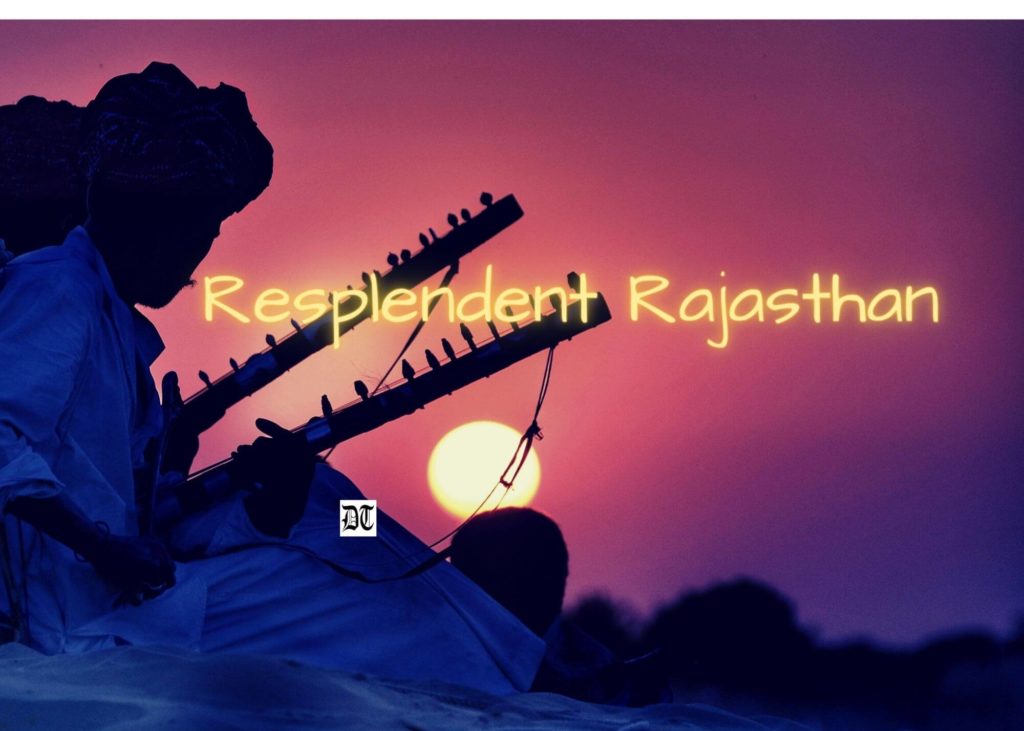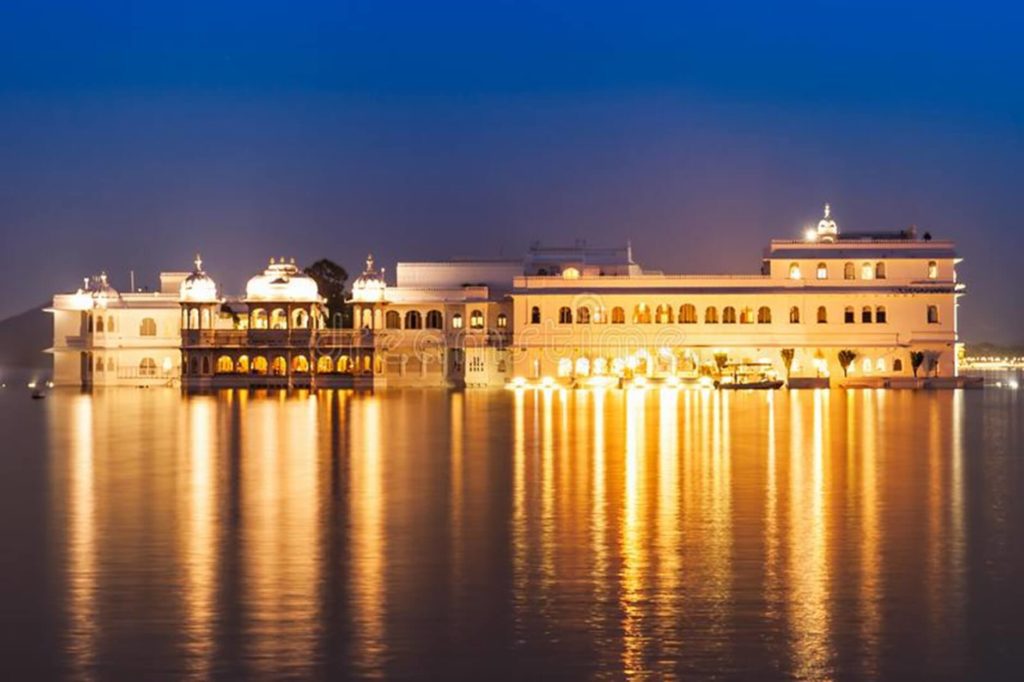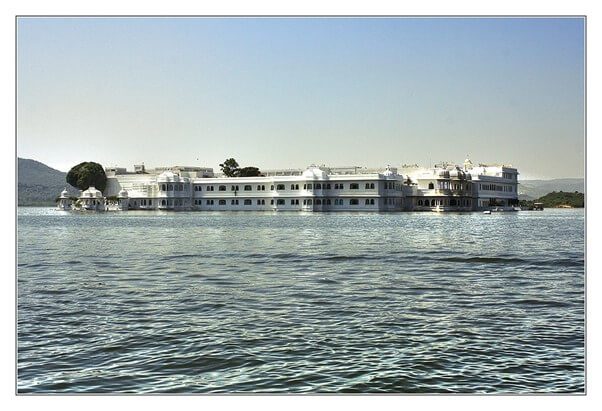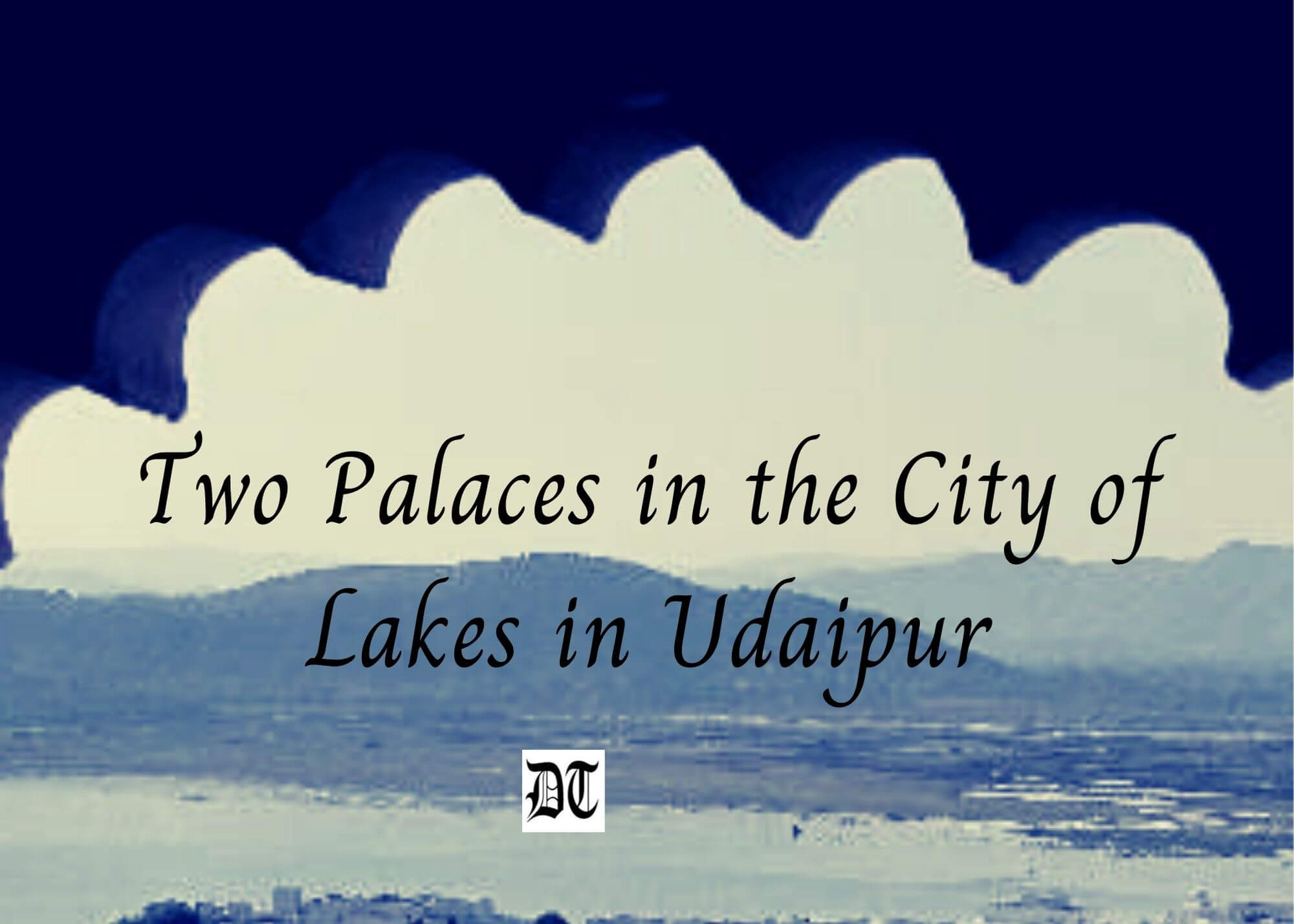Reading Time: 3 minutes
Dr. Parneet and Dr. Kiran tell us about the architectural splendour of the two Udaipur palaces, Jag Mandir and Jag Niwas. An exclusive for Different Truths.

The City of Lakes, Udaipur is in the southernmost part of Rajasthan and is surrounded by the Aravalli range. Well known for its lakes and a sophisticated lake system, it is also greatly visited for its palaces, forts, museums, galleries, gardens, temples, and cultural celebrations.
Jag Mandir and Jag Niwas, the two lake palaces in the City of Lakes, Udaipur add an interesting chapter in the story of the palatial structures amidst the sand dunes of Rajasthan.
The impressive series of structures in the three-storied Jag Mandir Palace include Gul Mahal, which was built first as a refuge for Prince Khurram, the elegant facade flanked by four carved statues of elephants on either side at the jetty entry on the lake from Udaipur; the Garden Courtyard and the Darikhana on its northern side; Bara Patharon ka Mahal (palace of the 12 stones); the Zenana Mahal – a southern extension to the Gul Mahal and the Kunwar Pada ka Mahal.
Jag Mandir and Jag Niwas, the two lake palaces in the City of Lakes, Udaipur add an interesting chapter in the story of the palatial structures…
Jag Mandir associates with the Mughal emperor Shahjahan (1628-1648), who was known as Prince Khurram in his youth. As he rebelled against his father Jahangir in 1623, he sought refuge in Udaipur under the protection of Maharana Karan Singh. He was placed in the City Palace with his wife Mumtaz Mahal and sons, Dara, and Aurangzeb. Later they were moved to Gul Mahal for safety in the middle of the lake. This domed pavilion was further enlarged by Karan Singh’s son Jagat Singh into a huge palace- Jag Mandir palace.

Jag Niwas, a magnificent building in Pichola Lake, the former summer palace of the royal dynasty of Mewar has now turned into a five-star deluxe hotel named the Lake Palace Hotel. This mesmerising white coloured palace, when lit in the night, creates an amazing reflection in the deepwater of the lake.
Standing on small islands in Lake Pichola, an artificial lake created in the 14th century, Jag Niwas appears to float on the surface of the water.
Standing on small islands in Lake Pichola, an artificial lake created in the 14th century, Jag Niwas appears to float on the surface of the water. Built between 1743 and 1746, it was initially called Jag Niwas after its founder Maharana Jagat Singh. The successive rulers used this palace as their summer resort, holding their ‘durbars’ (royal meetings) in its courtyards lined with columns, pillared terraces, fountains, and gardens. The walls made of black and white marbles are adorned by semi-precious stones and ornamented niches. Lake Palace has a number of courtyards aligned with myriad terraces, fountains and well laid gardens. The Palace boasts of special rooms by the name of Bada Mahal, Khush Mahal, Ajjan Niwas, Phool Mahal and Dhola Mahal that add to the beauty of the graceful palace. These exotic rooms are decked with carved arches, paintings, crystal work, stained glass work, and inland stones of pink and green lotus leaves.

Visuals sourced by the authors
Co-author:

Dr. Kiran Deep is Associate Professor in English at Sri Ganganagar (Rajasthan). Her English translation of eminent Punjabi poet Surjit Patar’s poems has been published by Sahitya Akademi. Her publications include the research book, “Mapping the Creative Terrain: Revisiting George Eliot and Thomas Hardy”, along with several articles in literary journals of national and international repute.















